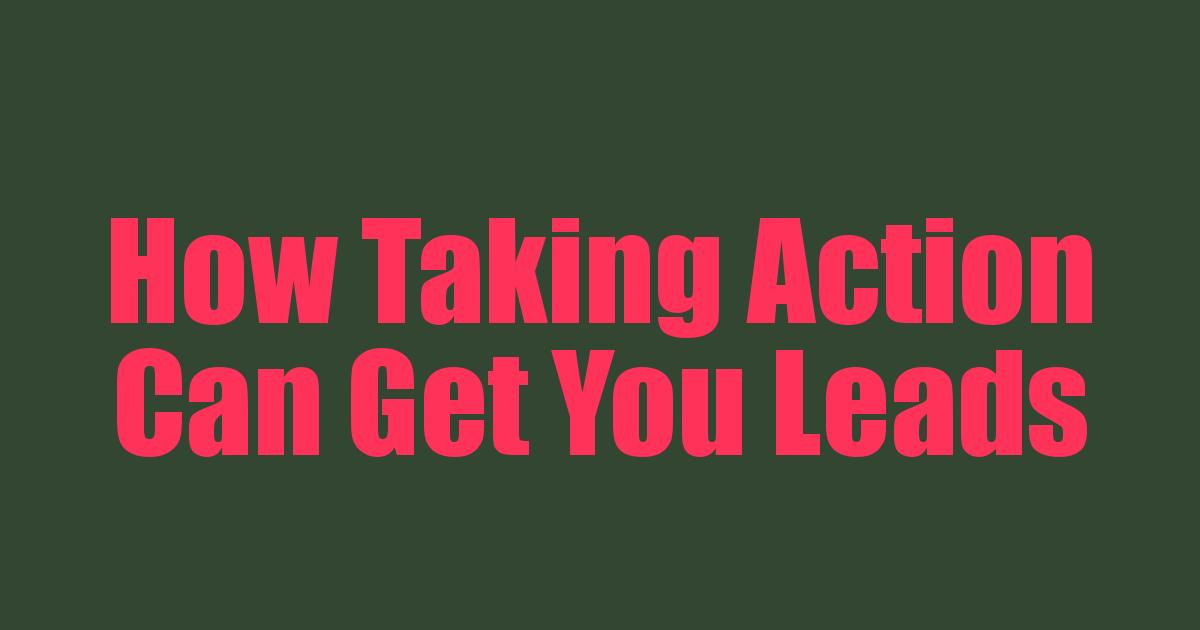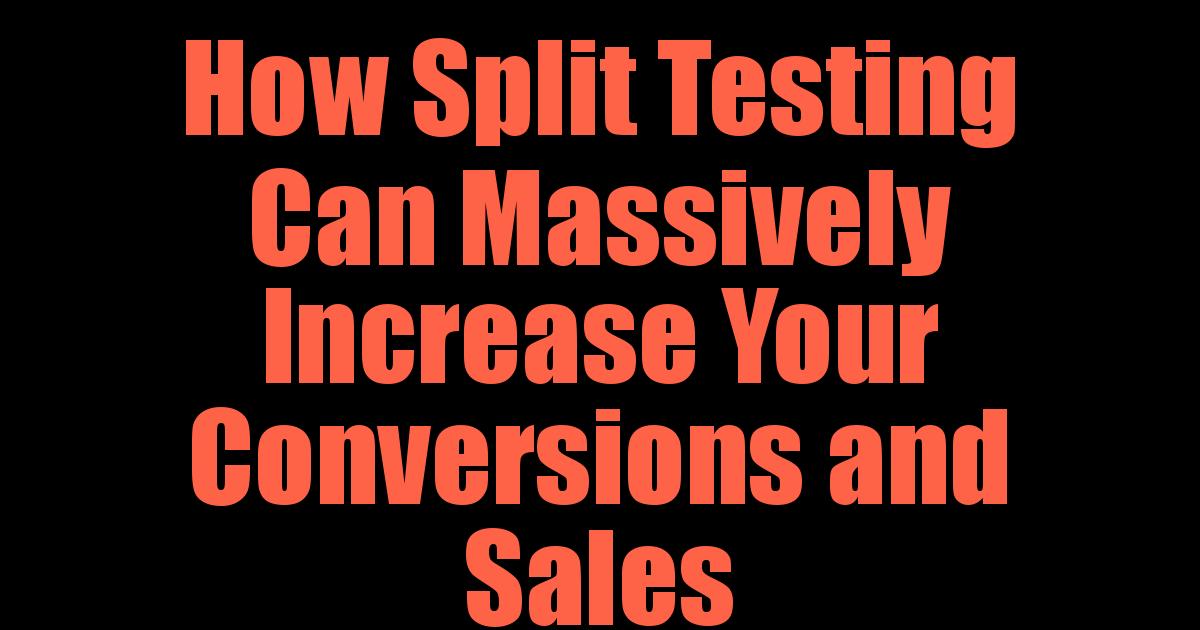 Instead of waiting for leads to come to you, go to them! Many people just build an opt-in page or a squeeze page and wait for leads to sign-up or reach out to them - so instead of waiting for people to find your store and buy from you - actively go out and find prospects.
Instead of waiting for leads to come to you, go to them! Many people just build an opt-in page or a squeeze page and wait for leads to sign-up or reach out to them - so instead of waiting for people to find your store and buy from you - actively go out and find prospects.
Look for questions that are being asked, which are relevant to what your business provides, on forums, Q&A sites (like Yahoo Answers or Quora) and social media such as Facebook and Twitter.
Now take a couple of minutes to answer those questions, making sure you provide value first and foremost. This will help you gain extra exposure for your business, help build you up as an authority in your niche, start to build trust between you and possible customers and potentially land you some sales.
For example, if you have an SEO service, look for questions on the best ways to optimize websites. Then you could leave an answer such as, “Here are 3 tips I find work well…(insert your tips here). If you’re after more information, I help people with their SEO, through information and doing it all for them, and here’s a link to an article I wrote listing 17 tested ways to improve your search engine optimization.” You’ve already given great information and value in your answer, making people more likely to click through to your site.
Another example would be if you were a chiropractor, you can find people complaining about back pain and offer a couple tips that you think might help them, followed by an offer to stop by your clinic for a free initial adjustment or consultation.
Or if you were in the weight loss niche, you could find people asking questions on the best ways to lose weight, give them a few tips, and then link to a longer video or blog post of yours mentioning even more tips perhaps with an offer to sign-up for a free newsletter, which can be used to try to drive them into your main offer.
One last example, of an awesome way to go to leads instead of waiting for them to come to you, was when I first started out online, I decided to just be an affiliate for some diamond sites (where I’d earn 5% to 15% per sale through my link). I would search the internet for leads of people asking questions on diamonds, trying to see if they found a good deal, etc., and then offer to do a free analysis for them. I would often times end up finding better deals through one of the sites I was an affiliate for (sometimes I’d even have a coupon or discount through the site), pass on my affiliate link to the specific diamond, and make a nice commission when they bought it. All this was done while coming off as being a super nice guy helping them out (even if I mentioned that it was an affiliate link).
Don’t underestimate the power of going to leads instead of waiting for them to come to you! In fact, it’s important to note that this doesn’t just have to be done with consumer leads. You can apply the same methods to finding other businesses to partner with, for instance, and proactively reaching out to them to try to land a deal. Or even proactively going out to leads in the media to see if they’d want to run an article or story on something that you’re an expert in related to your niche. Even taking just an hour or two a week doing this can have huge benefits for your business.
Although you can manually search for leads out on the internet, if you get serious enough about this technique, there are tools out there like WebFire.com that can help you do this and more.
Go looking for leads, instead of waiting for them to come to you. Look on forums, Q&A sites (like Yahoo Answers) and social media (such as Facebook, Twitter, etc.) to find questions being asked that are relevant to your offer. Answer those questions, providing good value, to increase your exposure and potentially make sales.
For help with finding leads after what you offer, you can check out a demo of WebFire's tools here and grab a special deal! Web Fire

 Every entrepreneur is well familiar with the importance of marketing in today’s era of extreme competition. Marketing through various channels has become essential to make sure a business is able to thrive in the market. Without a proper marketing strategy, a company will not be able to gain new customers and expand their reach.
Every entrepreneur is well familiar with the importance of marketing in today’s era of extreme competition. Marketing through various channels has become essential to make sure a business is able to thrive in the market. Without a proper marketing strategy, a company will not be able to gain new customers and expand their reach.
 Business to marketing seems like a foreign language to many people who are trying it for the first time. The consumer markets seems so much plainer and easier, after all, we're dealing with every day people. With businesses we feel we are dealing with some mysterious entity or some divine VIP, a thing whose persona is foreign to everything we knew in the every day human consciousness.
Business to marketing seems like a foreign language to many people who are trying it for the first time. The consumer markets seems so much plainer and easier, after all, we're dealing with every day people. With businesses we feel we are dealing with some mysterious entity or some divine VIP, a thing whose persona is foreign to everything we knew in the every day human consciousness.
 There’s many strategies to increase conversions, but have you tried this one? Try ending your prices with a 7, .95, 5 or .95. Instead of charging $10, for instance, consider charging $9.97. Even though it’s only a few cents less, people seem to think that it sounds cheaper. Even on high priced items the same tricks can work. For instance, you’ve probably never seen a car advertised for $30,000. Instead, you’ll see it advertised for something like $29,995.
There’s many strategies to increase conversions, but have you tried this one? Try ending your prices with a 7, .95, 5 or .95. Instead of charging $10, for instance, consider charging $9.97. Even though it’s only a few cents less, people seem to think that it sounds cheaper. Even on high priced items the same tricks can work. For instance, you’ve probably never seen a car advertised for $30,000. Instead, you’ll see it advertised for something like $29,995.
 Search engines remain one of the most common tools users are utilizing to find things online, Google of course being the most prominent among them. Search engine optimization is therefore key and making your site visible and getting your content on more eyes. You need traffic to build an audience, and an audience to build conversions. That starts with search engine optimization. There are different types of search engine optimization including off-page and on-page, and the rules vary a little by search engine.
Search engines remain one of the most common tools users are utilizing to find things online, Google of course being the most prominent among them. Search engine optimization is therefore key and making your site visible and getting your content on more eyes. You need traffic to build an audience, and an audience to build conversions. That starts with search engine optimization. There are different types of search engine optimization including off-page and on-page, and the rules vary a little by search engine.
 Looking for new customers? Or a way to make a whole bunch more sales? You’re going to love this strategy then! Think about other business that you could partner with, that you don’t directly compete with, where you could offer value that will make you both a lot of money. Think about the customers a business already has, and whether those same customers would be interested in your own product or service. Now, think of how you can make your offer a win-win for you and the other business. This is a great way to access a whole new database of potential clients for yourself, and give the business you’re partnering with an opportunity to upsell their current clients by offering them your service (for a cut of your fee).
Looking for new customers? Or a way to make a whole bunch more sales? You’re going to love this strategy then! Think about other business that you could partner with, that you don’t directly compete with, where you could offer value that will make you both a lot of money. Think about the customers a business already has, and whether those same customers would be interested in your own product or service. Now, think of how you can make your offer a win-win for you and the other business. This is a great way to access a whole new database of potential clients for yourself, and give the business you’re partnering with an opportunity to upsell their current clients by offering them your service (for a cut of your fee).
 Too many business owners and marketers will only create one version of an offer, sales page, opt-in page, ad, etc., and simply hope that it works. If it does, they’re happy. If it doesn’t, they think that the offer simply doesn’t work.
Too many business owners and marketers will only create one version of an offer, sales page, opt-in page, ad, etc., and simply hope that it works. If it does, they’re happy. If it doesn’t, they think that the offer simply doesn’t work.
